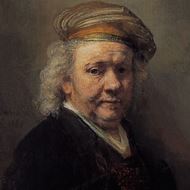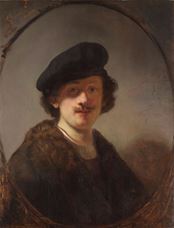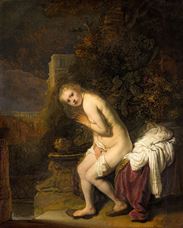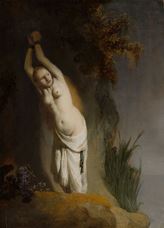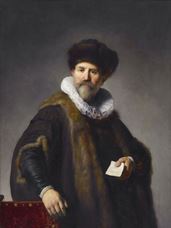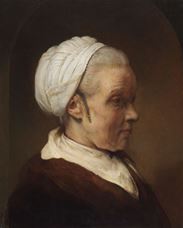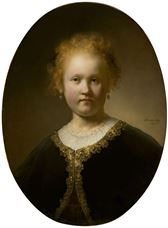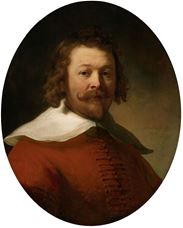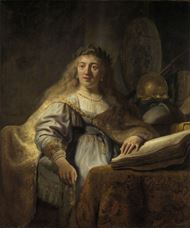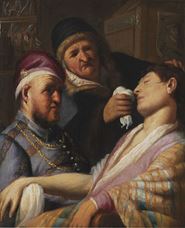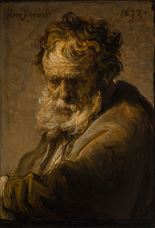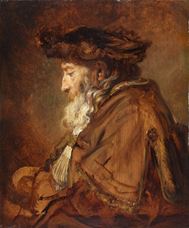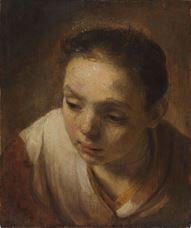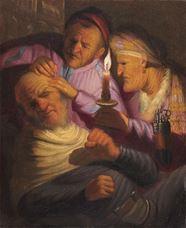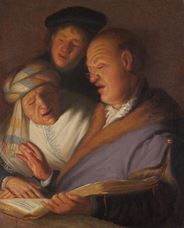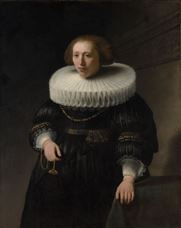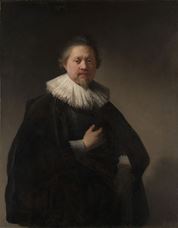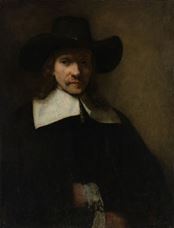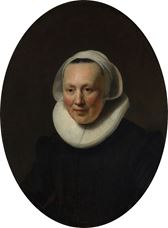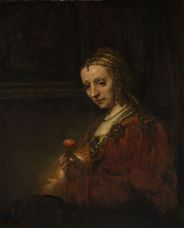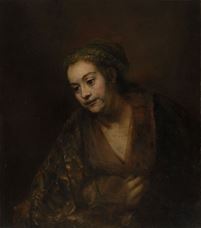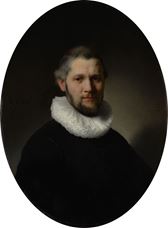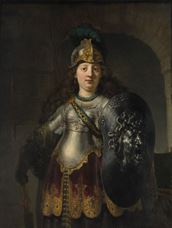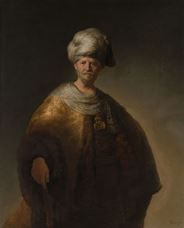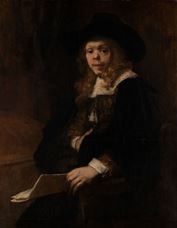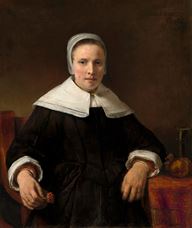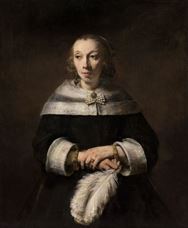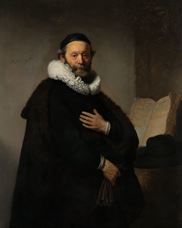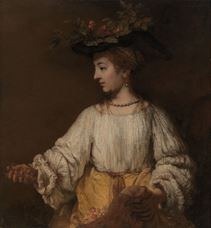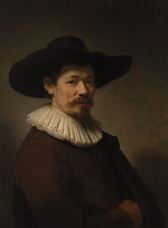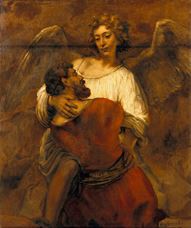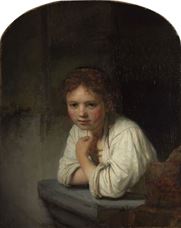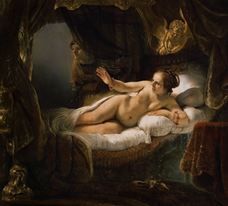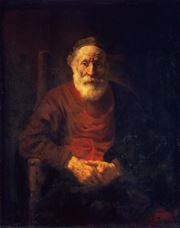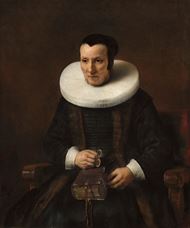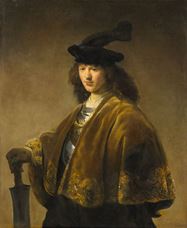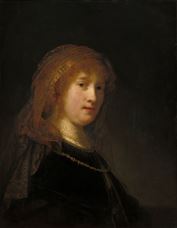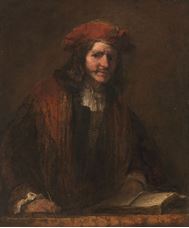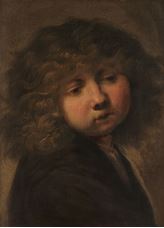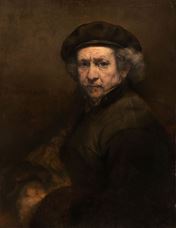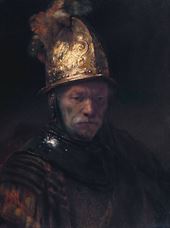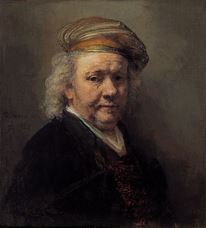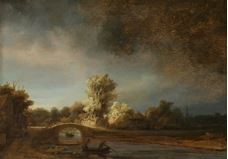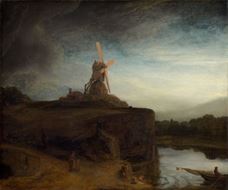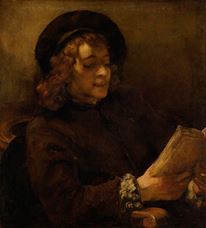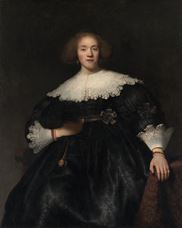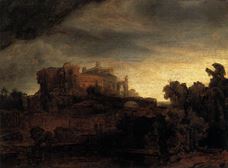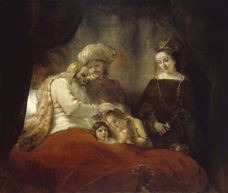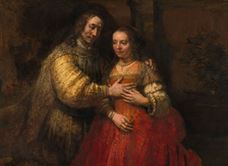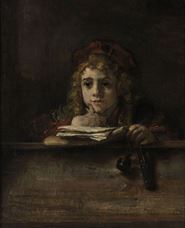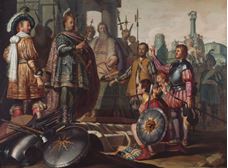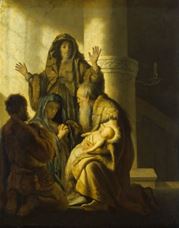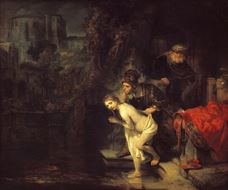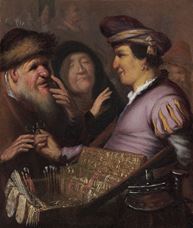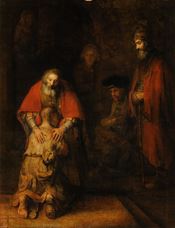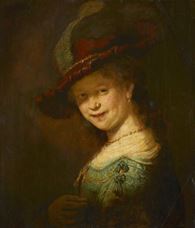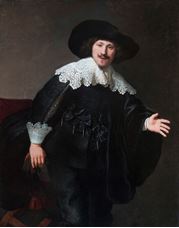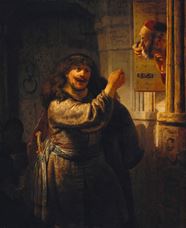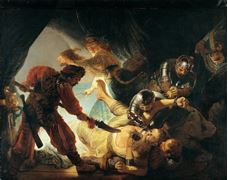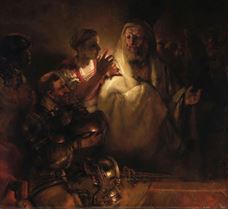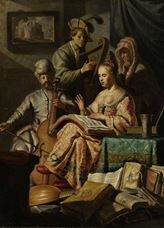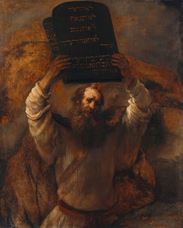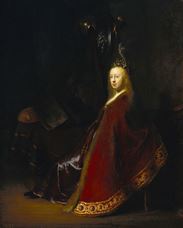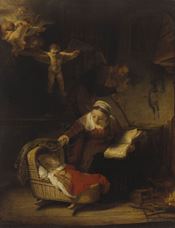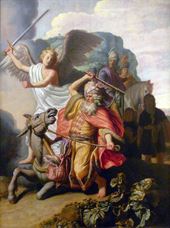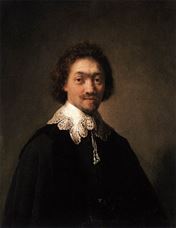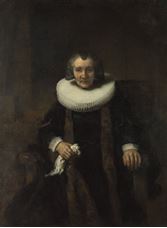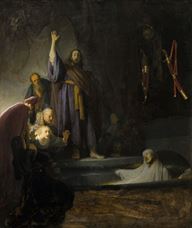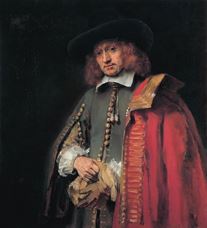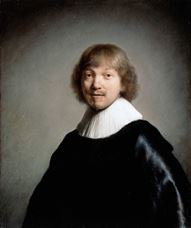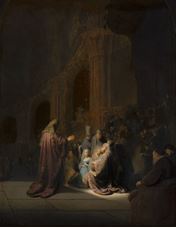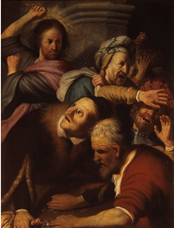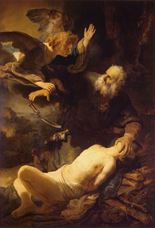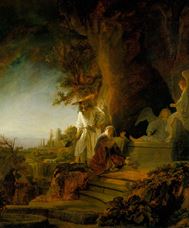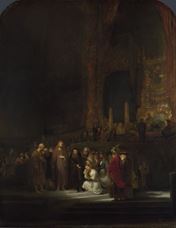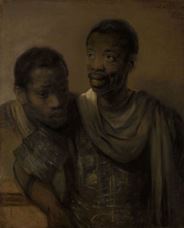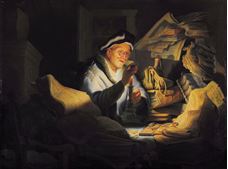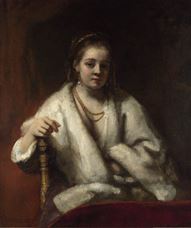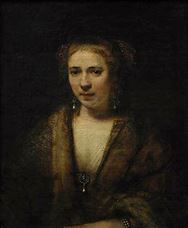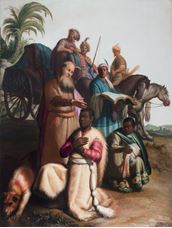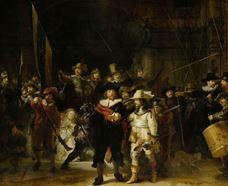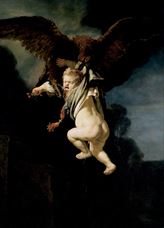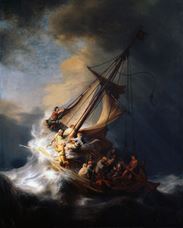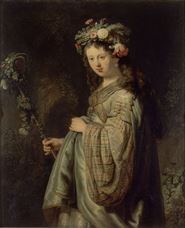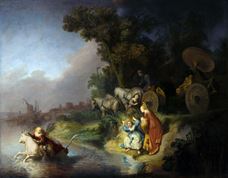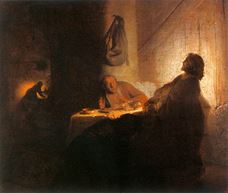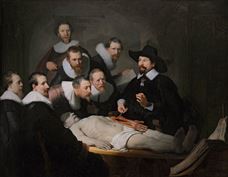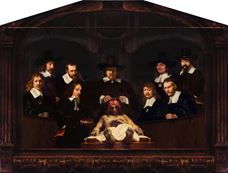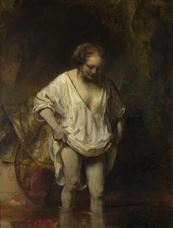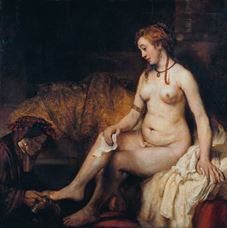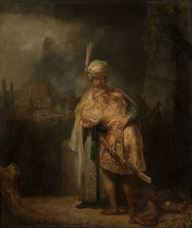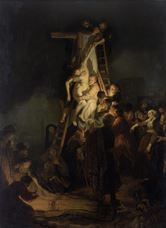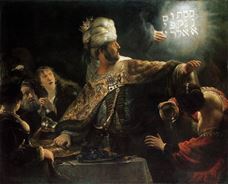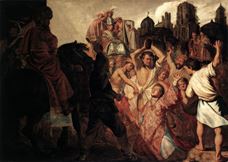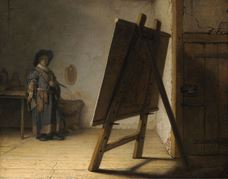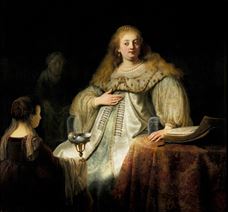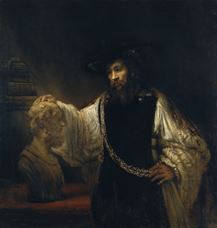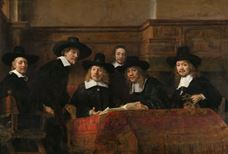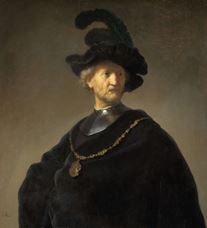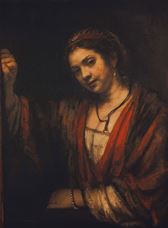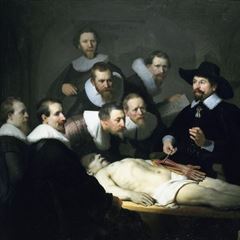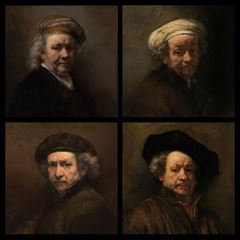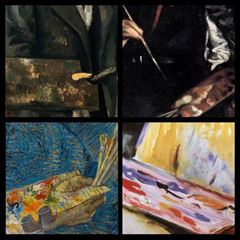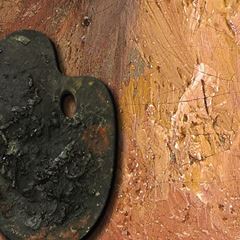Rembrandt van Rijn was born on July 15, 1606, in Leiden, the Netherlands. His father, Miller Harmen Gerritszoon van Rijn, was a baker's mother, Neeltgen Willemsdochter van Zuijtbrouck. He had nine siblings.
Rembrandt began his education at a Latin school. In 1620 he enrolled at the University of Leiden but left after one year. His passion for art brought him down as an apprentice to the famous Dutch painter Jacob van Swanenburg's workshop. Rembrandt was introduced to the art of color mixing and theory of perspective. He improved himself in the drawing. He both imitated the style of his master and tried to improve it.
After the first three-year workshop period he learned painting techniques, he moved to Pieter Lastman's studio in Amsterdam. Pieter Lastman was an expert in religious and historical paintings. Rembrandt received training from workshop friend Jan Lievens with Lastman about the use of light, shade, and color. Lastman was following Caravaggio. Within six months he was able to obtain all technical and know-how of Lastman. He observed the importance of Lastman in group compositions, in which he worked on dramatic movements and historical costumes. In the early paintings such as "The Stoning of Saint Stephen (1625)" and "The Baptism of the Eunuch (1626)", the effects of this observation are evident.
In 1624, Rembrandt worked for Lastman's friend Jan Pynas for a few months. Pynas was a gifted painter in the fields of landscape painting and composition. He opened a workshop with his friend and colleague Lievens at Leiden. Gerrit Dou became a student of Rembrandt in 1628. After his first student Dou, he would have had more than forty helpers and students during his lifetime.
Rembrandt, Frederick Henry and II. William's meeting to his executive assistant, Constantijn Huygens, was the beginning of the road to the "Passion Series" in which Jesus was the subject in 1632-33. These two paintings about "The Elevation Of The Cross" and "The Descent from the Cross" were ordered by the Huygens to the Rembrandt. But Rembrandt, who was fond of his freedom, never entered the service of the dynasty.
Rembrandt 's early work in the line, light, and shade, as well as the use of color, was observed. Although he had not visited Italy at all, it was known that he was influenced by Italian art and especially Caravaggio. The engraving was also an area of interest. He printed engravings with portraits, especially those of the Bible. He also made the first light shade experiments with these engravings.
In 1631 he moved to Amsterdam because of Rembrandt's growing reputation and the need for a new workshop. He started a collaboration with the well-known art dealer Hendrick Uylenburgh. Uylenburgh was one who knew and influenced the elders of the city. The friendship and commercial relationship with Rembrandt was influential in the painter's orders. He was the most successful painter of Amsterdam's fashion and portrait.
He received many orders with both religion and portrait themes. In 1632, during the first years of his fame, "Dr. Nicolaes Tulp's Anatomy Lesson" was one of the most important jobs of his career. This painting for the Amsterdam Surgeons Association was Rembrandt's first major public work in Amsterdam.
Spending time with Uylenburgh, Rembrandt met his prospective wife Saskia van Uylenburgh. Saskia was one of Hendrick's wealthy cousins and was closely involved with Rembrandt's work. Rembrandt, who led a rich and respectable life in most of his life, married Saskia in 1634. Saskia became a model for Rembrandt's many works. This was the period in which Rembrandt had a strong light effect in his work.
Rembrandt and Saskia moved to a house in Jodenbreestraat in 1639 (today the Rembrandt Museum). While Rembrandt was producing non-stop, he began to create a comprehensive collection of works of art and antiques. He helped to culminate in the art of marriage and helped to concentrate his work on trust and prosperity in the 1630s.
In this period of intense artistic production and material well-being, they had four children. However, they lost their first three children at an early age. His fourth child, Titus, was born in 1641. However, Rembrandt lost his wife Saskia immediately after the birth of Titus.
In 1642, Saskia's death deeply affected Rembrandt, who worked on "The Night Watch". In this paint, the painter would describe Captain Banning Cocq and his entourage together. Rembrandt made the composition. His daring attitude in the picture was not welcomed by those who ordered his painting. The refinement and detailed application in portraits were quite different from Rembrandt's other paintings.
Rembrandt hired a nanny named Geertje Dircx for his son Titus. With Geertghe he began to experience a not formal relationship. Their relationship has become irreproachable, problematic and has ended in a short time. In the late 1640s, Geertghe accused Rembrandt of allegedly trick on him on the promise of marriage. This process resulted in Geertghe's conviction.
In 1647, Hendrickje Stoffels took a job as a retainer at Rembrandt's house. In the process of separation that Rembrandt had with Geertghe, a love affair was started between Hendrickje and the painter. Hendrickje, Saskia, such as many of the artist's work would be a figure. Bathsheba a dated 1654 and A Woman Bathing in 1655 were some of them. Rembrandt shared the last years of his life with Hendrickje. In 1654, Rembrandt and Hendrickje's daughter Cornelia were born. During this period, he also experienced financial problems. Rembrandt's orders have also declined, as the war between the Netherlands and the UK had a negative impact on the economy of both countries. The first signs of Rembrandt entering the vortex of despair emerged in this period.
Rembrandt announced his bankruptcy in 1656. Two years later, he had to sell his house and collection (now the Museum of Rembrandt) in Amsterdam. As a result of his auction with his property, he received some money. He moved to his simple home in Rozengracht where he would stay until the end of his life. His paintings were for sale and orders with his son Titus and his wife Hendrickje interested. In order to protect Rembrandt, Titus and Hendrickje opened a gallery and registered it as employees. Rembrandt grazed a bit from his despair and started painting and engraving again.
In the last decade of his life, despite the financial problems and lack of orders, Rembrandt had the energy and creativity needed for his paintings. In 1656, one of these orders was a composition called "Jacob Blessing the Sons of Joseph."
Rembrandt lost his wife Hendrickje in 1663. For him, Hendrickje's loss was catastrophic and he turned to mourn in the house in Rozengracht. Rembrandt clearly reflected his sorrow during this period of maturity in his paintings. He has become a recluse. His exaggerated expressions in his paintings were no longer using eye-catching colors. He left the compositions in dark shades.
In 1668, his son Titus married the daughter of one of his family friends. However, a few months later, Titus died while Titus' wife was three months pregnant. An overly fond of his son, Rembrandt took his grandson Titia on his lap six months after this grieving incident. He died on October 4, 1669, a year later.
Bibliography;
Erdoğan, C.E., (2016). Sanatın Büyük Ustaları Rembrandt, Birinci Baskı, Hayalperest Yayınevi, İstanbul.
Turani, A., (2010). Dünya Sanat Tarihi, On Dördüncü Baskı, Remzi Kitabevi, İstanbul.
Yetkin, S.K., (2007). Büyük Ressamlar, Birinci Baskı, Palme Yayıncılık, Ankara.
Altuna, S., (2013). Ünlü Ressamlar Hayatları ve Eserleri, Birinci Baskı, Hayalperest Yayınevi, İstanbul.
Spence, D., (2012). Büyük Ressamlar Rembrandt, İkinci Basım, Koleksiyon Yayıncılık, İstanbul.
-----------., (2007). Rembrandt, Birinci Baskı, Boyut Yayın Grubu, İstanbul.
Gombrich, E.H., (2002). Sanatın Öyküsü, Üçüncü Baskı, Remzi Kitabevi, İstanbul.
Lunday, E., (2013). Büyük Sanatçıların Gizli Hayatları, Beşinci Baskı, Domingo Yayınevi, İstanbul.
1606 He was born on 15 July in Leiden, the Netherlands.
1613-20 Sent to Latin school. He entered Leiden University.
1621 He entered the workshop of Jacob van Swannenburgh.
1623 He took lessons from Pieter Lastman in Amsterdam.
1624-25 He worked at Jan Pynas' studio. He opened a workshop with Jan Lievens in Leiden.
1628-29 Gerrit Dou was his first student. Rembrandt completed "The Blinding of Samson". Rembrandt attracted the interest of governor secretary Constantin Huygens during his visit to Leiden.
1630 He lost his father.
1631 He moved with his art dealer in Amsterdam to Ulyenburgh and became famous as a portrait painter.
1632 “Dr. Nicolaes Tulp's Anatomy Lesson” made a picture.
1634 He married Ulyenburgh's nephew Saskia van Utyenburgh.
1635 He and his wife moved to a rented house in Nieuwe Doelenstraat.
1639 He moved with his wife to Jodenbreestraat. (Today Rembrandt Museum)
1640 He lost his mother.
1641 Their son Titus was born.
1642 He finished the "The Night Watch." His wife Saskia is dead. Geertje Dircx settled down as housekeeper and caretaker of Titus.
1647 Hendrickje Stoffels settled down as housekeeper.
1652-54 Netherlands England war exploded. After the war there was a great economic crisis. He owed large amounts.
1654 He had a daughter named Cornelia from Hendria.
1656 He announced bankruptcy.
1658 He sold his house and his collections. He didn't recover materially. He moved to Roozengracht, preferring an introverted life.
1660 With Titus, Hendrickje opened the art sales office for Rembrandt.
1663 Hendrickje lost her life.
1664-68 Moved to Lauriergracht. Titus died in 1668.
1669 He started to live with his bride, his grandson was born. He died on 4 October.













